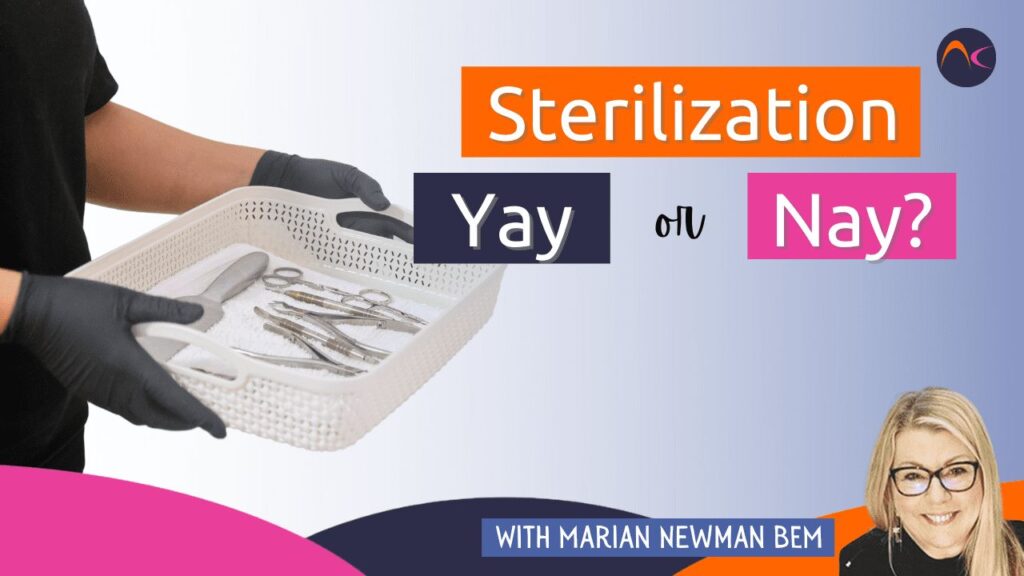For the last two years, there have been endless discussions on Health & Safety measures and hygiene due to the pandemic. But, for decades, every country has had training courses that are clearly ‘not fit for purpose’. They do not teach their students about the decontamination levels that will guarantee to keep their clients (and themselves and employees) as safe as possible. We are talking about cleaning/sanitizing, disinfection, and sterilization.
Even with some lack of education, the pandemic should have brought some focus onto hygiene and understanding what is required for us, nail professionals. From some ‘digging’, it seems that there are several levels within the sector:
- those that take hygiene and decontamination very seriously, and understand the levels
- those that have a reasonable understanding, and do their best
- those that like their clients to think their hygiene levels are high, but possibly do not fully understand
- those that place no focus on real hygiene.
Which one are you?
The debate on whether nail services need an autoclave continues with plenty of arguments on both sides. In reality, an autoclave is essential for tools that may come into contact with any bodily fluids. This would suggest that nail services do not require this level of hygiene. But do they?
It is very easy to nick the skin with a file or cuticle nippers. It is also easy to cause a minor abrasion on the skin with a buffer, and it is definitely easy to cause an abrasion when using an e-file at the base of the nail and on the Proximal Nail Fold.
A cut on the skin is usually obvious as it will bleed. If it is a file that has caused the wound, we can discard it. If it is a metal tool, then it will likely have blood on it however minuscule. However, with a minor abrasion, the likelihood is that it will not be noticed immediately. But as soon as it happens it will become slightly wet. This is plasma from the blood that is clear and may have some white blood cells in it; it could be lymphatic fluid. Both are there to help protect the wound from infection. (Red blood cells and other blood bourn cells will arrive to heal the wound, and this is when the redness/inflammation can be seen some time after). As the PNF is living skin there can also be leakage of the contents of the skin cells.
So, this description shows how tools can be in contact with bodily fluids without you being aware! There is the argument for an autoclave, especially if you use an e-file on the skin.
There is also an argument that a nail professional prefers to take every precaution in health and safety as possible, and wants their clients to be aware that they do, so they feel safe.
The autoclave is the highest level of decontamination but one level down from that is using a hospital-grade disinfection system. This is very specific and it should say in the brand specifications and marketing what level of pathogens it will destroy. It will have clear instructions on how to use it, and it will be strong enough to be harmful to the skin. For nail services with no autoclave, this level is non-negotiable. It must be part of any hygiene routine for metal tools. If the instructions are followed to the letter, it will be good enough for any minor contact with bodily fluids.
A simple disinfectant will not do this job effectively.
Coming down a level is a disinfectant for hard surfaces. This is still not suitable for skin contact but can be used to clean desks, floors, light switches, door handles, etc. This will not adequately clean metal tools.
The lowest level is ‘cleaning’ and this falls into two categories:
- The preferable method is a liquid soap, running water (hot or cold), and sufficient time in contact with the soap and water.
- An alcohol-based cleanser, often in the form of a gel. It is in a gel as the alcohol needs to stay in contact with the surface for a short period of time, and a gel evaporates slower than a thin liquid.
This level is essential for the cleaning of the hands of both the nail pro and all clients. The first method should always come first and then be supported at the desk by the second method. The second method should never take the place of soap and water in nail services.
The first method, using soap and water, is also an ESSENTIAL step before the top two levels (autoclave and hospital-grade disinfectant) can be efficiently carried out! Every tool must be washed with liquid soap and water using a brush to clean away all debris and oils which will hamper the decontamination process.
Your safety, your client’s safety, and the safety of others around you are paramount. Do not cut corners. It is far better and far more professional to go over and above where hygiene is concerned.
Read more in Proper Nail Salon Hygiene.


